Discover the profound impact of ancient Egypt on Greek culture, spanning religion, art, architecture, science, and philosophy. Through centuries of cultural exchange, Greece adopted elements like temple designs, mystical beliefs, and knowledge in mathematics and medicine.

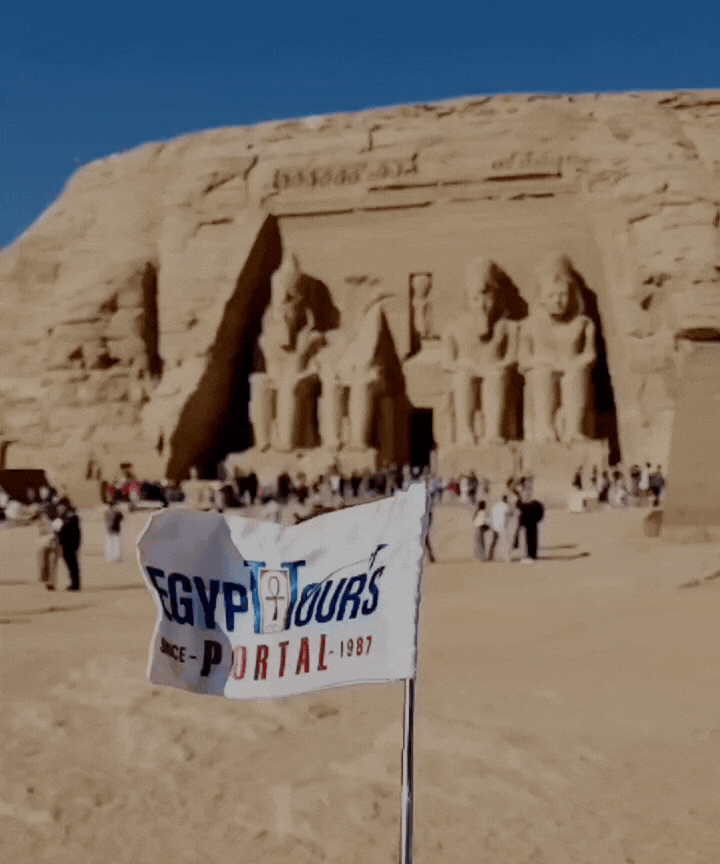
How Did Egypt Influence the Culture of Ancient Greece?, is a powerful question that shows the strong connection between the ancient cultures of Egypt and Greece. Although geographically distant, the interaction between ancient Egypt and Greece was one of the most influential cultural exchanges in the ancient world.
Spanning centuries, this relationship was driven by trade, conquest, and intellectual curiosity. Egypt's long-established civilization deeply shaped Greek religion, art, architecture, philosophy, and science. This article delves deeper into how the Ancient Egyptian Civilization influenced ancient Greek culture, providing historical facts, data, and examples to illustrate the depth of this cross-cultural interaction.

Both Egyptian and Greek cultures developed detailed creation myths to explain the origins of the world, and striking similarities can be found between their respective cosmogonies.
Egyptian Cosmogony: In the Hermopolitan cosmogony (around 2000 BCE), the Egyptian creation tale starts with Atum who was the primordial god that created the world from the primordial waters of Nun. Atum’s offspring, Shu (air) and Tefnut (moisture), created Geb (earth) and Nut (sky), representing a familiar cycle of elements. These deities are in line with Egypt's belief in the cyclical nature of creation and destruction, linked to natural forces.
Greek Cosmogony: In Hesiod’s Theogony (circa 700 BCE), the first gods—Chaos, Gaia (Earth), and Tartarus—emerge from the void. This early concept of chaos leading to the formation of the earth and sky mirrors the Egyptian cosmogony's elemental focus. Both mythologies view the world as emerging from a primordial state of disorder, followed by the birth of deities representing natural forces.
Both traditions share the idea of the world’s creation from chaos, suggesting that early Greek thought may have been influenced by Egyptian models or traditions indirectly passed through the eastern Mediterranean.
The Egyptian goddess Isis and the Greek goddess Demeter share significant parallels, particularly in their roles as protectors of fertility and the afterlife.
Isis: As one of Egypt's most important deities, Isis was associated with healing, fertility, and the resurrection of the dead, especially in the myth of Osiris, where she resurrects her brother-husband, Osiris, through magical rituals. She was worshipped across the Roman Empire, including in Greece, and her cult flourished especially after Alexander the Great's conquests.
Demeter: Demeter, the Greek goddess of agriculture, also presided over fertility and the harvest. Like Isis, she is deeply connected with the Ancient Egyptian afterlife, especially through the myth of her daughter Persephone, whose annual descent into the Underworld and return symbolizes cycles of death and rebirth.
The Mysteries of Isis, practiced widely in the Hellenistic world, closely resembled the Eleusinian Mysteries in Greece, where initiates learned secret rituals that promised a blessed afterlife, reflecting Egyptian religious influence on Greek ritual practices.
Discover fascinating facts about the Meaning of the Ancient Egyptian Gods and Goddesses.
Read More
Greek sculpture, particularly in the Archaic period (circa 600–480 BCE), reveals clear Egyptian influences, especially in early statues of young men called kouroi (plural of kouros).
Egyptian Influence: Egyptian statues of pharaohs, such as those found in the tombs of the Old Kingdom (circa 2686–2181 BCE), often featured a rigid, frontal pose, with one foot forward and the figure’s arms at the sides. This pose, symbolizing power and stability, was adopted by Greek sculptors in the creation of their kouros figures.
Greek Adaptation: The Greeks began to refine this style by introducing greater anatomical detail and incorporating a more dynamic stance. For example, the early Greek statue of Kroisos (circa 530 BCE) features a more naturalistic portrayal of the human body but still follows the Egyptian tradition of frontal positioning. This fusion of Egyptian rigidity with Greek anatomical study laid the foundation for the later fluidity and movement found in Classical Greek sculpture.
Egyptian symbolism made its way into Greek art through cultural exchange, especially after Egypt became a key trade partner.
Lotus and Sphinx: The lotus flower, a symbol of rebirth and creation in Egypt, appears frequently in Greek art, particularly in pottery and architectural decoration. Similarly, the sphinx, often used in Egyptian temples to guard sacred spaces, was adopted by Greek artists, especially during the Hellenistic period (323–30 BCE). The Greek sphinx, though typically depicted with a human face, retained its association with mysticism and divine protection.
The Dendera Zodiac: The Dendera Zodiac (c. 50 BCE), an Egyptian star chart, influenced Greek astrology. The twelve signs of the zodiac in Greek tradition closely parallel the Egyptian constellations, with the zodiac system itself originating from Babylonian and Egyptian astronomical observations.
Explore more fascinating details about the creativity and meaning of Ancient Egyptian Art.
Read More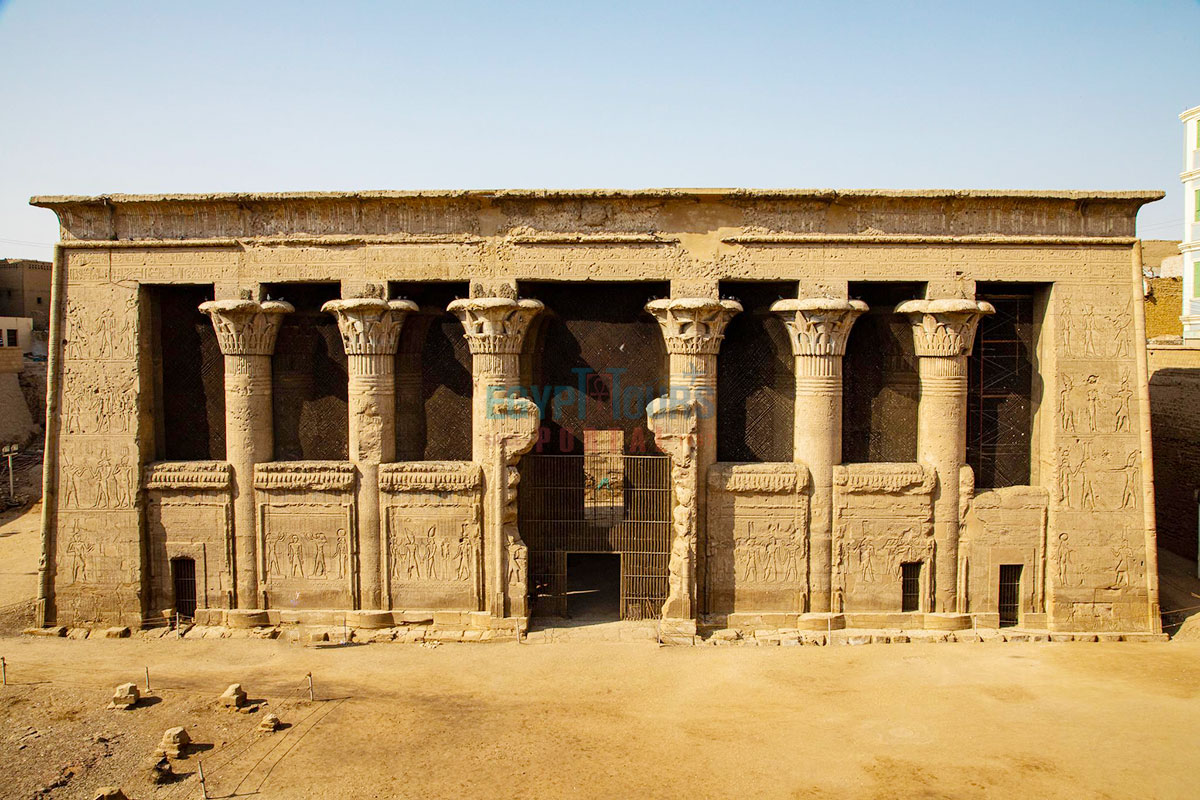
The Greek column owes much to Egyptian architectural developments, particularly in the use of monumental columns.
Lotus and Papyrus Capitals: Egyptian columns were often topped with capitals shaped like lotus flowers or papyrus plants, symbols of the Nile River and fertility. These forms heavily influenced early Greek columns, such as those in the Doric and Ionic orders, which included ornamental elements inspired by Egyptian designs. The Greek Doric order, which became the standard in classical architecture, was simpler than its Egyptian counterparts but retained a sense of monumental grandeur.
Greek Adaptation: The Greeks adopted and refined the use of columns in their temples. The Temple of Hera at Olympia (circa 600 BCE) features the use of columns with more refined proportions, setting the stage for the more iconic Greek temples such as the Parthenon (447–432 BCE).
The layout and alignment of Greek temples show evidence of Egyptian influence, especially in the use of astronomical alignments.
Astronomical Alignment: Egyptian temples were meticulously aligned with celestial bodies to mark significant events like solstices and equinoxes. Similarly, Greek temples like the Temple of Amun-Ra in Delphi (circa 6th century BCE) exhibit similar celestial alignments, reflecting the influence of Egyptian temple planning.
Egyptian Temple Designs: The Hellenistic period saw an even greater blending of Greek and Egyptian architectural styles, particularly in the city of Alexandria, where Greek temples were often influenced by Egyptian forms and rituals, like the Serapeum of Alexandria (c. 300 BCE).
Explore captivating details about the genius and unique architecture of the Ancient Egyptians.
Read More
Egypt was a leader in mathematics and geometry, especially with its monumental architecture and land surveying practices.
Pythagoras: The Greek philosopher Pythagoras (circa 570–495 BCE) is said to have studied in Egypt, where he encountered advanced principles of Ancient Egyptian mathematics used in the construction of the pyramids. The Pythagorean theorem, crucial to Greek geometry, likely drew on Egyptian methods for solving geometric problems in construction.
Plato: Plato (circa 428–348 BCE) was also influenced by Egyptian teachings, as evidenced by his references to Egyptian wisdom in his dialogues. He also mentions in his work Phaedrus that the Egyptian god Thoth invented writing, further acknowledging Egypt’s contribution to Greek intellectual traditions.
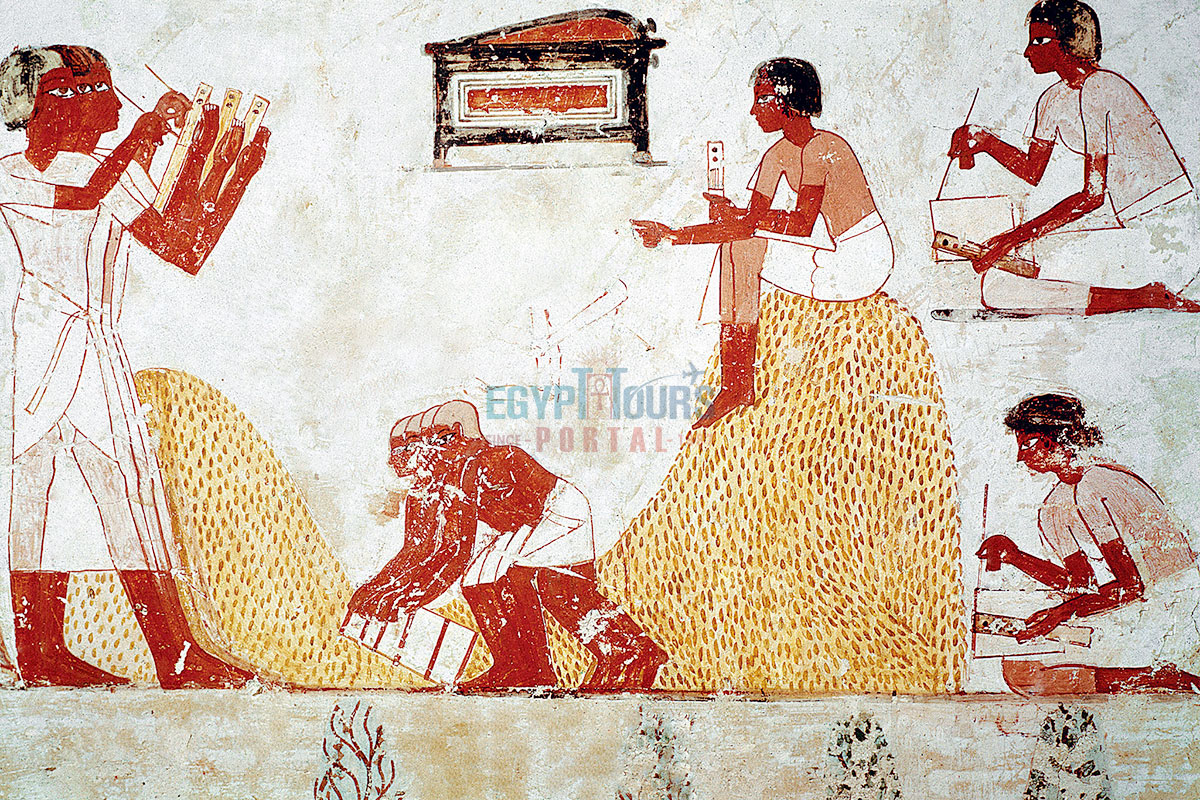
The Greek colony of Naucratis in Egypt, founded around 630 BCE, served as a crucial center for Ancient Egyptian trade and cultural exchange with Greece.
Cultural Syncretism: Naucratis was the first officially recognized Greek colony in Egypt, and it attracted Greek traders, soldiers, and artists. Artifacts discovered in the area—such as Greek pottery with Egyptian motifs—demonstrate how Greek artists were exposed to and inspired by Egyptian art, architecture, and religious practices.
Historical Significance: Archaeological evidence from Naucratis, including inscriptions and artwork, reveals how Egyptian influences permeated Greek culture during the Archaic and Classical periods (circa 600 BCE – 323 BCE).
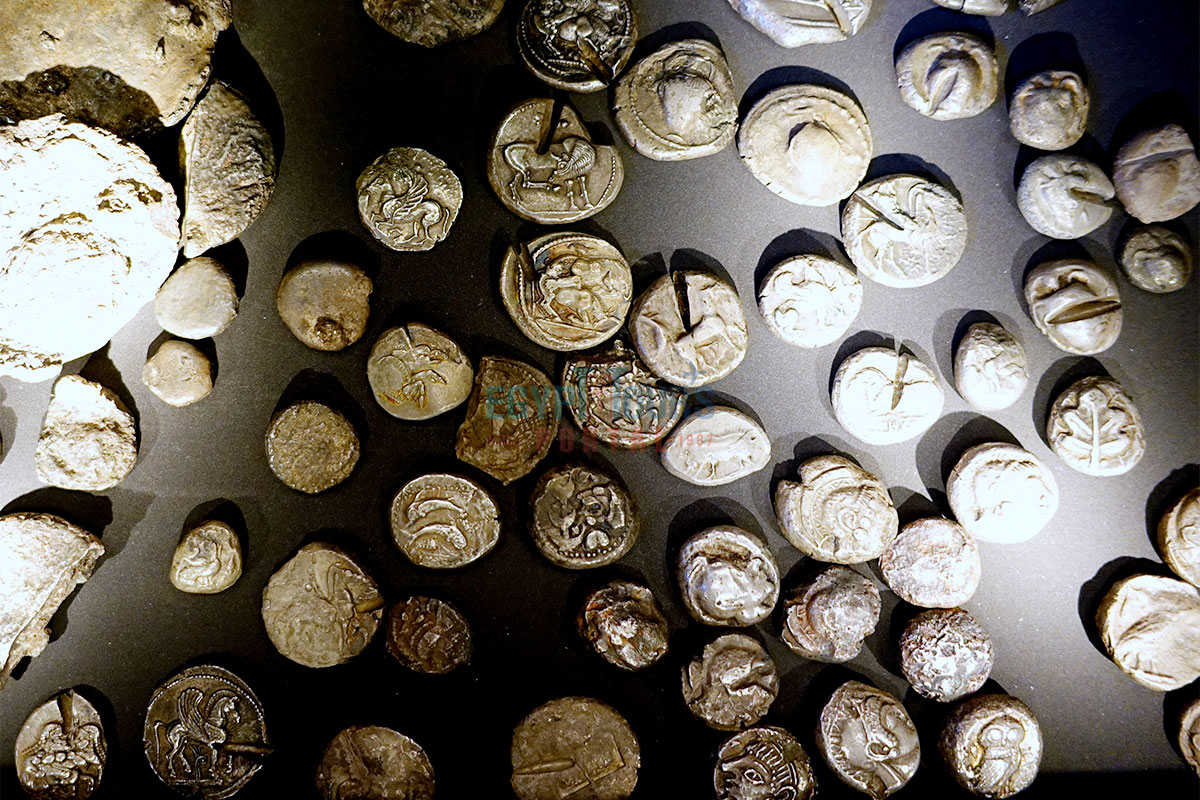
The depiction of African features on Greek coins serves as an enduring testament to the cultural, political, and economic ties between Greece and Egypt. Both Greek and Ancient Egyptian Coins were not merely tools for commerce; they were carriers of powerful symbols reflecting the interconnectedness of the ancient Mediterranean world.
African Imagery on Coins: During the Ptolemaic era (305–30 BCE), coins minted in Alexandria frequently bore imagery that linked Greek and Egyptian traditions. Among these, African heads appeared as representations of Egypt or the broader African continent. This was especially prevalent during the reign of Ptolemy I Soter, who used these symbols to communicate his legitimacy as a ruler of both Greek and Egyptian peoples.
Serapis and Hybrid Deities: Coinage often featured hybrid Greco-Egyptian deities such as Serapis, a syncretic god combining aspects of Osiris, Apis, and Hades. The use of such imagery symbolized the blending of Greek and Egyptian religious practices, emphasizing unity under Ptolemaic rule.
The presence of African heads and other Egyptian symbols on Greek coins underscores the strategic importance of Egypt in Greek economic and political life.
Economic Significance: As the granary of the ancient world, The economy of Ancient Egypt was critical to the Hellenistic economy. Greek coins featuring Egyptian motifs highlighted the wealth and resources that Egypt contributed to the Greek world, especially its agricultural abundance and trade goods like papyrus, grain, and gold.
Political Messaging: Coinage served as a propaganda tool to assert the Ptolemaic dynasty’s authority over Egypt. By combining Greek and Egyptian symbols, the Ptolemies demonstrated their dual identity as heirs of Alexander the Great and legitimate pharaohs of Egypt, ensuring loyalty among diverse populations.
The hybrid imagery on these coins provides insights into how Greeks viewed Egypt and Africa. Far from being seen as alien, Egypt was respected as a land of ancient wisdom and fertility. The depiction of African heads was not merely a reflection of geographic boundaries but an acknowledgment of Egypt's vital cultural and economic role in the Greek world.

Egyptian contributions to astronomy and calendar systems were pivotal in shaping Greek scientific thought.
Egyptian Astronomical Knowledge: Ancient Egyptians were advanced in tracking celestial bodies, especially the star Sirius (the Dog Star), which they used to predict the annual flooding of the Nile River. This deep understanding of celestial movements directly influenced the Greek approach to astronomy.
The Dendera Zodiac (c. 50 BCE), an Egyptian star chart discovered in the Temple of Hathor at Dendera, is a prime example of Egyptian precision in astronomy. Greek astronomers, such as Hipparchus (c. 190–120 BCE), are believed to have had access to Egyptian astronomical data, which contributed to the development of their own systems.
Calendar Systems: The Egyptians were also pioneers in the development of a solar calendar, with 365 days in a year. The Greeks initially used a lunar calendar, but the Egyptian solar calendar was later adopted by the Greeks, especially after Alexander the Great’s conquest of Egypt. This Egyptian Calendar influence can be seen in the Alexandrian calendar, which played a central role in the later development of the Julian calendar.
The transmission of Egyptian medical knowledge to Greece is often attributed to the influence of Egyptian priests and scholars, who were highly regarded as medical experts.
Greek Physicians in Egypt: Renowned Greek physicians, such as Hippocrates (c. 460–370 BCE) and Herophilus (c. 335–280 BCE), are believed to have traveled to Egypt to study medicine. Hippocrates, often referred to as the "Father of Medicine," is said to have visited Egypt, where he learned about Egyptian medical practices, including the use of herbs, surgical techniques, and anatomy.
Egyptian embalming practices, which required detailed knowledge of human anatomy, were also instrumental in shaping Greek understanding of the human body.
Greek Adaptation: The Greeks adopted many Egyptian medicinal practices, especially in the realms of surgical procedures and herbal remedies. Egyptian medicine’s emphasis on hygiene, diagnosis, and practical treatment became foundational in the development of Greek medical theory.
Ptolemaic Alexandria was a center for medical knowledge, and the Library of Alexandria housed extensive medical texts that incorporated both Egyptian and Greek contributions to the field.
Explore the fascinating facts about the brilliance of the Ancient Egyptians Doctors.
Read More
The city of Alexandria, founded by Alexander the Great in 331 BCE, became one of the most important cultural and intellectual hubs in the ancient world, merging Greek and Egyptian elements.
Ptolemaic Rule: After Alexander’s death in 323 BCE, his general Ptolemy I Soter took control of Egypt, establishing the Ptolemaic dynasty, which ruled Egypt until the death of Cleopatra VII in 30 BCE. Under Ptolemaic rule, Alexandria became a vital center for both Greek and Egyptian culture.
The Greeks introduced their own governmental structures, military systems, and philosophy, while Egypt’s rich religious traditions, monumental architecture, and scientific knowledge greatly influenced Ptolemaic governance and Egyptian society.
Economic Significance: Alexandria's strategic location along the Mediterranean trade routes made it an economic powerhouse, linking Greece, Egypt, and the wider Mediterranean world. The Ptolemaic dynasty heavily utilized Egypt’s vast resources, particularly in grain production, to fund their rule and maintain economic stability.
The city's Great Library and Lighthouse of Alexandria, one of the Seven Wonders of the Ancient World, attracted scholars, philosophers, and traders from all over the world.
Coins minted during the Ptolemaic era often featured Greek and Egyptian iconography, symbolizing the merging of two distinct cultural traditions under a single political entity.
Ptolemaic Coinage: The coins of Ptolemy I (323–283 BCE) and his successors depicted both Greek deities, such as Zeus, and Egyptian symbols, including the image of the god Serapis, a syncretic figure combining aspects of Osiris and Apis with the Greek god Hades.
These coins were a reflection of the political unity between the two civilizations, blending Greek and Egyptian cultural elements to legitimize Ptolemaic rule.
Cultural Integration: The use of Egyptian deities on Greek coins, alongside Greek inscriptions and designs, reveals the political and cultural blending that occurred under the Ptolemaic dynasty.
The coinage served as a powerful tool for both economic transactions and cultural representation, symbolizing the dual heritage of the Ptolemaic rulers.
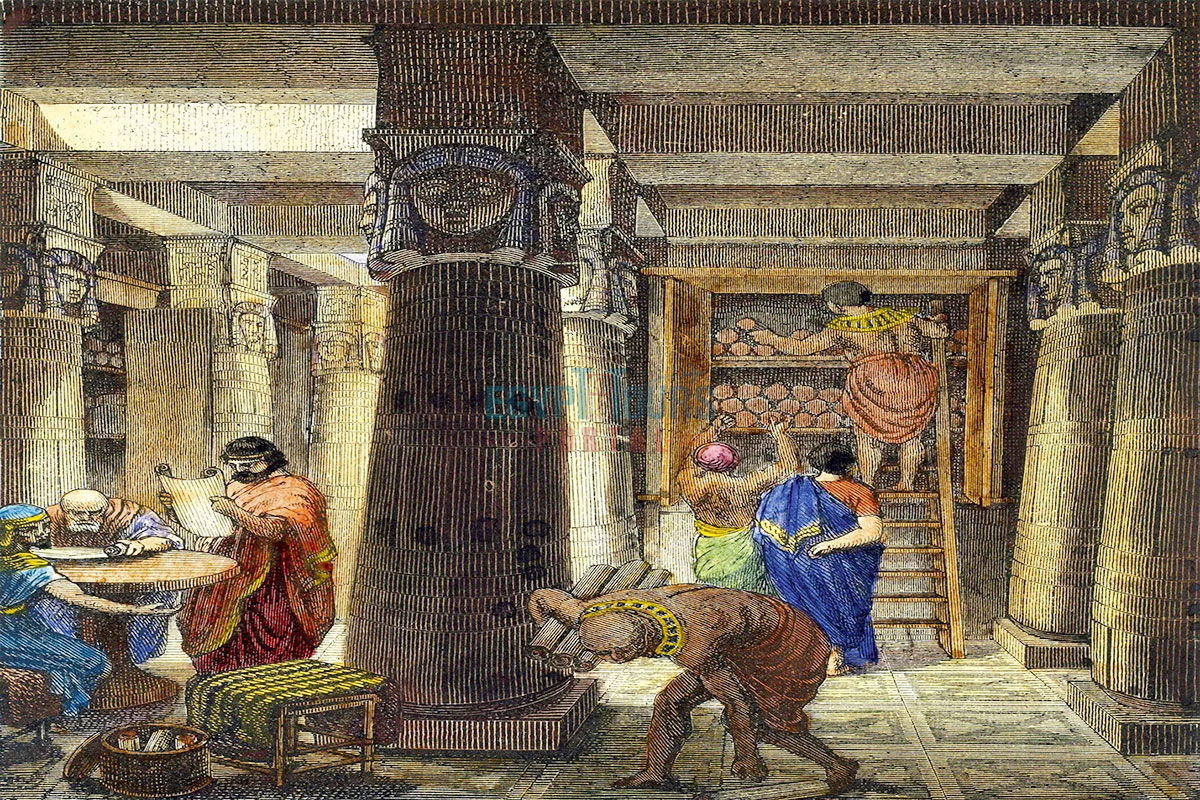
Greek writers and philosophers were profoundly influenced by Egyptian religious texts, myths, and wisdom. The proximity of Greek colonies like Naucratis and the intellectual cross-pollination facilitated the transfer of Egyptian literary traditions to Greek authors.
Herodotus: The Greek historian Herodotus (c. 484–425 BCE), often called the "Father of History," visited Egypt during his travels in the 5th century BCE. In his famous work, Histories, Herodotus provided detailed accounts of Ancient Egyptian religion, customs, and history, many of which would have been unknown to his Greek audience. His admiration for Egypt’s ancient civilization is evident in his writings, where he frequently references Egypt as a source of wisdom and knowledge.
Plutarch: The Greek philosopher and historian Plutarch (c. 46–120 CE) also recognized the influence of Egyptian religious thought on Greek intellectual traditions. In his work Moralia, Plutarch discusses Egyptian deities like Isis and Osiris, noting their influence on Greek religious practices. He also explored the mystical aspects of Egyptian philosophy, which inspired later Greek philosophers.
Greek Philosophy and Egyptian Mysticism: Greek philosophers, including Plato, often drew on Egyptian wisdom in shaping their metaphysical ideas. Plato’s dialogues, particularly Timaeus, reflect Egyptian influence, with their focus on cosmology, the soul, and the divine order of the universe. The Egyptian concept of the soul’s immortality and the importance of moral purity were echoed in Greek philosophical traditions, especially through figures like Pythagoras and Plato.
Egypt's influence on Greek culture spanned religion, art, science, and philosophy, deeply reshaping Greek society. Egyptian deities like Isis and Osiris were integrated into Greek religious practices, influencing both the Greek pantheon and afterlife beliefs. Greek art and architecture were inspired by Egyptian models, leading to new techniques in sculpture and design.
Thinkers like Pythagoras and Plato drew from Egyptian knowledge in geometry, astronomy, and medicine. This cultural exchange laid the foundation for the Hellenistic and Roman periods, with both Egyptian and Greek traditions continuing to shape Western heritage. Witness the unique connection between Egypt and Greece by booking our magical Egypt Tour packages or Nile Cruises to explore the blessing wealth of both cultures in Egypt.
Private 4 Days Cairo Tour Packages 4 days Cairo Egypt tour package will offer a bles...
Tour Location: Cairo – Giza...
Stunning 5 Days Cairo and Alexandria Tour Package 5 days Cairo and Alexandria tour p...
Tour Location: Cairo/Giza/Alexandria...
Exceptional 6 Days Cairo, Luxor & Aswan Tour Package 6 days Cairo, Luxor & A...
Tour Location: Cairo/Giza/Aswan/Luxor...
Amazing 7 Days Cairo and Hurghada Holiday 7 Days Cairo & Hurghada holiday will e...
Tour Location: Cairo – Giza – Hurgh...
Egyptian Religious Beliefs and Deities, Such as Isis, Influenced Greek Mythology. Isis Parallels Demeter in Fertility Roles, and Other Egyptian Myths Inspired Greek Creation Stories and Concepts of the Afterlife.
Yes, Egyptian Column Designs, Like Lotus and Papyrus Capitals, Inspired Greek Architectural Styles. Elements of Egyptian Temples Influenced Greek Temple Layouts and Their Connection to Celestial Alignments.
Greek Sculptors Adopted Egyptian Techniques, Such as Frontal Poses and Large-scale Statues. Egyptian Symbols, Like the Sphinx, Were Incorporated Into Greek Art and Iconography.
Greek Philosophers, Such as Pythagoras, Learned From Egyptian Teachings in Mathematics, Geometry, and Astronomy. This Knowledge Influenced Greek Advancements in Science and Philosophy.
Naucratis Was a Greek Trading Post in Egypt That Became a Hub for Cultural and Commercial Exchange. It Facilitated the Blending of Greek and Egyptian Artistic, Religious, and Intellectual Traditions.
Egyptian Medical Knowledge, Documented in Texts Like the Ebers Papyrus, Influenced Greek Medical Practices. Figures Like Hippocrates Drew Upon Egyptian Approaches to Anatomy and Healing.
Trade Routes Allowed for the Exchange of Goods, Ideas, and Technologies. Egyptian Artifacts Found in Greece and Greek-style Pottery in Egypt Demonstrate Mutual Influence Through Trade.
Deities From Both Cultures Share Overlapping Traits, Such as Isis and Demeter (Fertility) or Thoth and Hermes (Knowledge and Communication), Reflecting Shared Symbolic Functions.
Greek Intellectuals, Such as Herodotus, Visited Egypt to Study Its Advanced Knowledge in Mathematics, Architecture, and Theology. These Experiences Shaped Greek Intellectual Traditions.
Greek Coins Occasionally Featured African or Egyptian Imagery, Such as Sphinxes or African Heads, Symbolizing Economic Ties and Cultural Admiration for Egypt.
Egyptian Beliefs in Judgment After Death and the Journey to the Afterlife Inspired Greek Ideas Like Hades and the Judgment of Souls.
Egypt’s Early Advancements in Science, Art, Religion, and Governance Provided a Foundation Upon Which Greek Culture Developed and Expanded.
Yes, the Egyptian Focus on Celestial Cycles, Such as the Movements of Sirius, Influenced Greek Astronomy and Calendar Systems.
Egyptian Symbols, Such as the Ankh and the Eye of Horus, Inspired Greek Artistic Motifs, Often Reinterpreted Within a Hellenistic Context.
Archaeological Finds, Including Artifacts From Naucratis, Greek Depictions of Egyptian Gods, and Parallels in Art and Architecture, Provide Tangible Evidence of Egypt’s Impact on Greek Culture.
The entire country of Egypt deserve to be explored with its every heavenly detail but there are places that must be seen before any other such as the breathtaking Hurghada's red sea, The wonders of Cairo the pyramids of Giza, the great sphinx, the Egyptian Museum, Khan El Khalili Bazaar, the wonders of Luxor like Valley of the Kings, Karnak & Hatshepsut temple and the wonders of Aswan such as Abu Simbel temples, Philea temple, Unfinished obelisk and The Wonders of Alexandria like Qaitbat Citadel, Pompey's Pillar and Alexandria Library. Read more about the best places to visit in Egypt.
If you want to apply for a Visa On Arrival that lasts for 30 days then you should be one of the eligible countries, have a valid passport with at least 6 months remaining and pay 25$ USD in cash, as for the E-Visa for 30 day you should have a valid passport for at least 8 months, complete the online application, pay the e-visa fee then print the e-visa to later be presented to the airport border guard. You could also be one of the lucky ones who can obtain a free visa for 90 days. Read more about Egypt travel visa.
Egypt has a variety of delicious cuisines but we recommend “Ful & Ta’meya (Fava Beans and Falafel)”, Mulukhiya, “Koshary”, a traditional Egyptian pasta dish, and Kebab & Kofta, the Egyptian traditional meat dish.
The best time to travel to Egypt is during the winter from September to April as the climate becomes a little tropical accompanied by a magical atmosphere of warm weather with a winter breeze. You will be notified in the week of your trip if the Climate is unsafe and if any changes have been made.
You should pack everything you could ever need in a small bag so you could move easily between your destinations.
We have been creating the finest vacations for more than 20 years around the most majestic destinations in Egypt. Our staff consists of the best operators, guides and drivers who dedicate all of their time & effort to make you have the perfect vacation. All of our tours are customized by Travel, Financial & Time consultants to fit your every possible need during your vacation. It doesn't go without saying that your safety and comfort are our main priority and all of our resources will be directed to provide the finest atmosphere until you return home.
You will feel safe in Egypt as the current atmosphere of the country is quite peaceful after the government took powerful measures like restructuring the entire tourist police to include all the important and tourist attractions in Egypt. Read more about is it safe to travel to Egypt.
Wear whatever feels right and comfortable. It is advised to wear something light and comfortable footwear like a closed-toe shoe to sustain the terrain of Egypt. Put on sun block during your time in Egypt in the summer to protect yourself from the sun.
The best activity is by far boarding a Nile Cruise between Luxor and Aswan or Vise Versa. Witness the beauty of Egypt from a hot balloon or a plane and try all the delicious Egyptian cuisines and drinks plus shopping in old Cairo. Explore the allure and wonders of the red sea in the magical city resorts of Egypt like Hurghada and many more by diving and snorkeling in the marine life or Hurghada. Behold the mesmerizing western desert by a safari trip under the heavenly Egyptian skies.
There are a lot of public holidays in Egypt too many to count either religious or nation, the most important festivals are the holy month of Ramadan which ends with Eid Al Fitr, Christmas and new years eve. Read more about festivals & publich holidays in Egypt.
Egypt is considered to be one of the most liberal Islamic countries but it has become a little bit conservative in the last couple of decades so it is advised to avoid showing your chest, shoulders or legs below the knees.
Arabic is the official language and Most Egyptians, who live in the cities, speak or understand English or at least some English words or phrases. Fewer Egyptians can speak French, Italian, Spanish, and German. Professional tour guides, who work in the tourism sector, are equipped to handle visitors who cannot speak Arabic and they will speak enough English and other languages to fulfill the needs of all our clients.
The fastest way is a car, of course, a taxi. If you are in Cairo ride a white taxi to move faster or you could board the fastest way of transportation in Egypt metro if the roads are in rush hour.
The temperature in Egypt ranges from 37c to 14 c. Summer in Egypt is somehow hot but sometimes it becomes cold at night and winter is cool and mild. The average of low temperatures vary from 9.5 °C in the wintertime to 23 °C in the summertime and the average high temperatures vary from 17 °C in the wintertime to 32 °C in the summertime. The temperature is moderate all along the coasts.
It is the home of everything a traveler might be looking for from amazing historical sites dating to more than 4000 years to enchanting city resorts & beaches. You will live the vacation you deserve as Egypt has everything you could possibly imagine.









